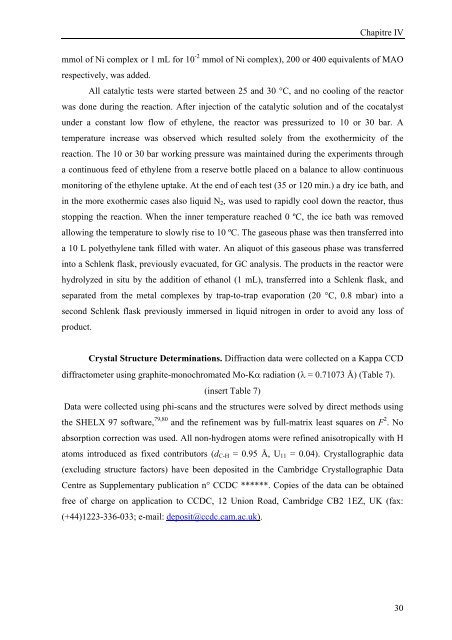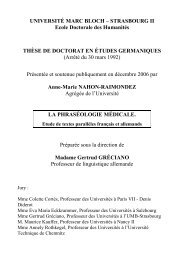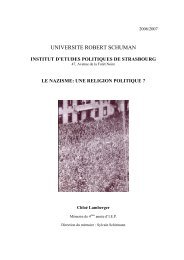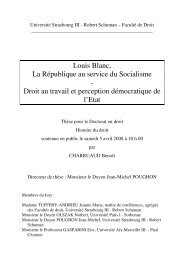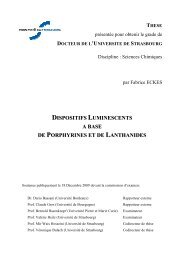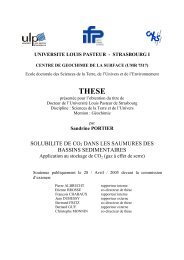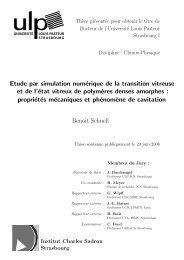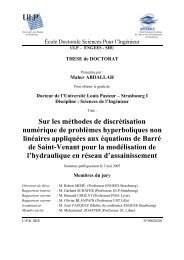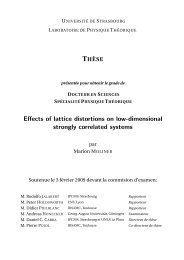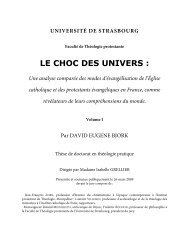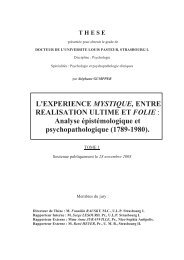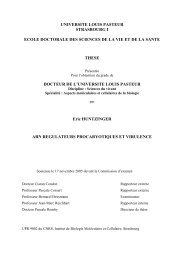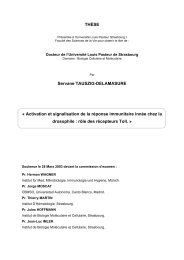Anthony KERMAGORET - THESES ET MEMOIRES DE L'UDS
Anthony KERMAGORET - THESES ET MEMOIRES DE L'UDS
Anthony KERMAGORET - THESES ET MEMOIRES DE L'UDS
You also want an ePaper? Increase the reach of your titles
YUMPU automatically turns print PDFs into web optimized ePapers that Google loves.
Chapitre IV<br />
mmol of Ni complex or 1 mL for 10 -2 mmol of Ni complex), 200 or 400 equivalents of MAO<br />
respectively, was added.<br />
All catalytic tests were started between 25 and 30 °C, and no cooling of the reactor<br />
was done during the reaction. After injection of the catalytic solution and of the cocatalyst<br />
under a constant low flow of ethylene, the reactor was pressurized to 10 or 30 bar. A<br />
temperature increase was observed which resulted solely from the exothermicity of the<br />
reaction. The 10 or 30 bar working pressure was maintained during the experiments through<br />
a continuous feed of ethylene from a reserve bottle placed on a balance to allow continuous<br />
monitoring of the ethylene uptake. At the end of each test (35 or 120 min.) a dry ice bath, and<br />
in the more exothermic cases also liquid N2, was used to rapidly cool down the reactor, thus<br />
stopping the reaction. When the inner temperature reached 0 ºC, the ice bath was removed<br />
allowing the temperature to slowly rise to 10 ºC. The gaseous phase was then transferred into<br />
a 10 L polyethylene tank filled with water. An aliquot of this gaseous phase was transferred<br />
into a Schlenk flask, previously evacuated, for GC analysis. The products in the reactor were<br />
hydrolyzed in situ by the addition of ethanol (1 mL), transferred into a Schlenk flask, and<br />
separated from the metal complexes by trap-to-trap evaporation (20 °C, 0.8 mbar) into a<br />
second Schlenk flask previously immersed in liquid nitrogen in order to avoid any loss of<br />
product.<br />
Crystal Structure Determinations. Diffraction data were collected on a Kappa CCD<br />
diffractometer using graphite-monochromated Mo-Kα radiation (λ = 0.71073 Å) (Table 7).<br />
(insert Table 7)<br />
Data were collected using phi-scans and the structures were solved by direct methods using<br />
the SHELX 97 software, 79,80 and the refinement was by full-matrix least squares on F 2 . No<br />
absorption correction was used. All non-hydrogen atoms were refined anisotropically with H<br />
atoms introduced as fixed contributors (dC-H = 0.95 Å, U11 = 0.04). Crystallographic data<br />
(excluding structure factors) have been deposited in the Cambridge Crystallographic Data<br />
Centre as Supplementary publication n° CCDC ******. Copies of the data can be obtained<br />
free of charge on application to CCDC, 12 Union Road, Cambridge CB2 1EZ, UK (fax:<br />
(+44)1223-336-033; e-mail: deposit@ccdc.cam.ac.uk).<br />
30


